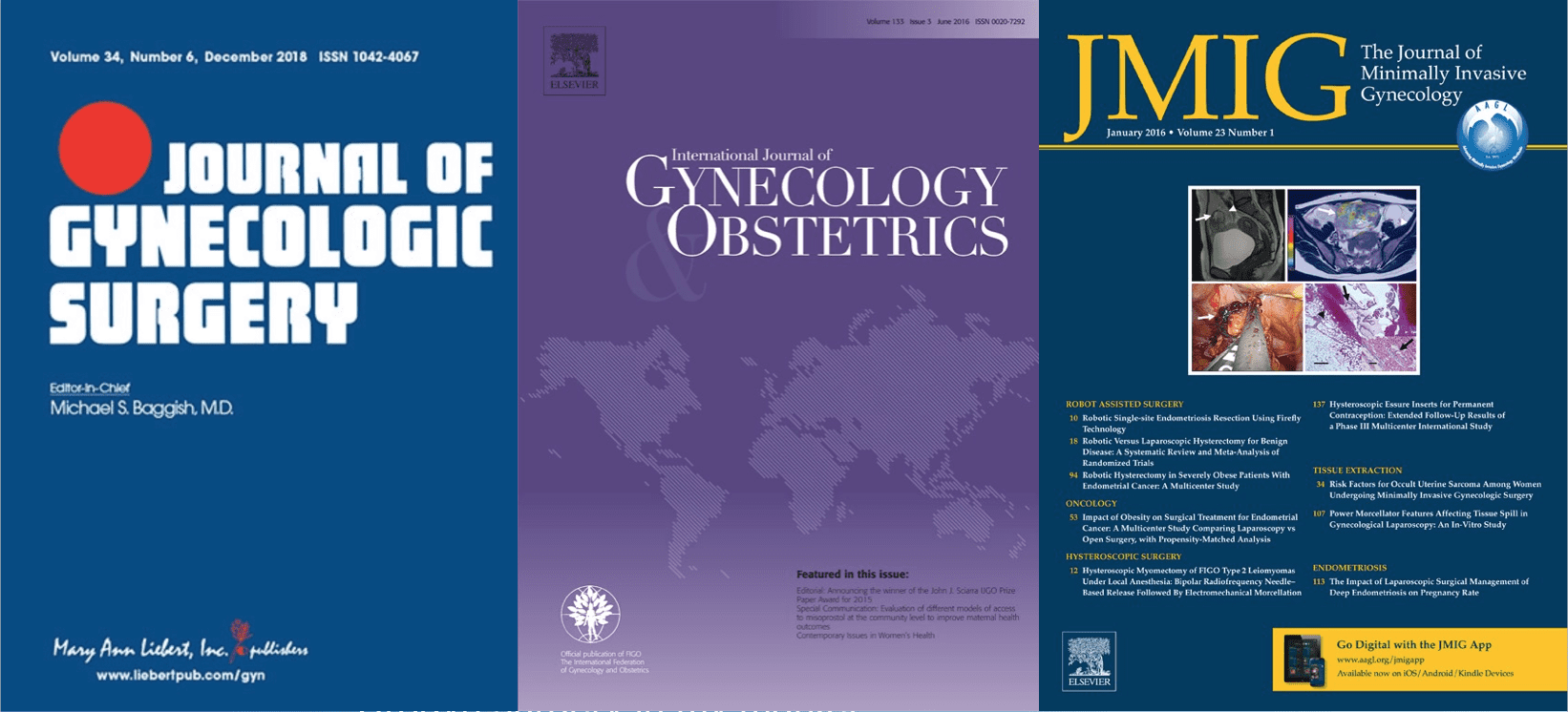ARTICLES & VIDEOS
For the past 15 years, Texas Urogynecology and Laser Surgery Center, under Dr. Farnam’s direction, has been on the cutting edge of research and surgical technology. Dr. Farnam’s research has been published in multiple peer reviewed scientific journals.

Comparison of Running V-Loc Suture Versus Interrupted Vicryl Suture for Vaginal Cuff Closure, a Retrospective Cohort Study
Study to determine if V-Loc Absorbable Wound Closure Device (Covidien, USA) compares favorably to traditional Vicryl suture for vaginal cuff closure. Two hundred consecutive patients who underwent robotic total laparoscopic hysterectomy for benign indications were evaluated with regard to age, body mass index (BMI), estimated blood loss, and postoperative complications.
Study Objective: To determine if V-Loc Absorbable Wound Closure Device (Covidien, USA) compares favorably to traditional Vicryl suture for vaginal cuff closure.
Design: A retrospective cohort study with a non-concurrent comparison group.
Setting: Two major urban hospitals with advanced robotic surgery programs.
Patients: Two hundred consecutive patients who underwent robotic total laparoscopic hysterectomy for benign indications were evaluated with regard to age, body mass index (BMI), estimated blood loss, and postoperative complications.
Intervention: Two hundred robotic total laparoscopic hysterectomy procedures were performed by one surgeon with two methods for vaginal cuff closure. Interrupted Vicryl suture was utilized in the former 100 cases as the comparison group, and V-Loc Absorbable Wound Closure Device was incorporated into the latter 100 cases.
Measurements and Main Results: A preliminary evaluation of the data indicates that when compared to Vicryl, there was no increased risk of major or minor complications or increased blood loss using V-loc for vaginal cuff closure. Additionally, V-Loc vaginal cuff closure can be performed rapidly with an average time less than ten minutes.
Conclusion: V-Loc Absorbable Wound Closure Device can be used safely and effectively for vaginal cuff closure with no increased risk of complications or increased blood loss compared to interrupted Vicryl suture. Moreover, V-Loc cuff closure can be performed expediently, but additional study is necessary to establish superiority of V-Loc with regard to cuff closure time.
Robotic Single Incision Total Laparoscopic Hysterectomy: A Novel New Surgical Technique
The primary goal of this study was to determine the feasibility of using the da Vinci Surgical System to perform a single incision Total Laparoscopic Hysterectomy.
Study Objective: The primary goal of this study was to determine the feasibility of using the da Vinci Surgical System to perform a single incision Total Laparoscopic Hysterectomy.
Design: Careful patient selection and counseling was employed to identify a patient with a benign indication for a laparoscopic hysterectomy, and no prior abdominal surgery. Outcome was compared to historical controls for total laparoscopic hysterectomy.
Setting: Major urban hospital with advanced laparoscopic and robotic technology and trained staff.
Patients: One patient appropriately counseled to undergo a robotic single incision total laparoscopic hysterectomy.
Intervention: Robotic single incision total laparoscopic hysterectomy.
Measurements and Main Results: A preliminary evaluation reveals that a robotic single total laparoscopic hysterectomy can be done safely and effectively. Blood loss, postoperative pain, recovery and convalescence were similar to that of total laparoscopic hysterectomy. Number of incisions and scaring was reduced. However operating room time was significantly longer. Prolongation was thought to be due to difficulty maintaining pneumoperitoneum and vaginal cuff closure.
Conclusion: These findings suggest that robotic single incision total laparoscopic hysterectomy may be a safe alternative to traditional laparoscopic hysterectomy. However increased operating room time may be a limiting factor. Improvement in pneumoperitoneum and vaginal cuff closure may enhance operative efficiency. Additional study is needed.
